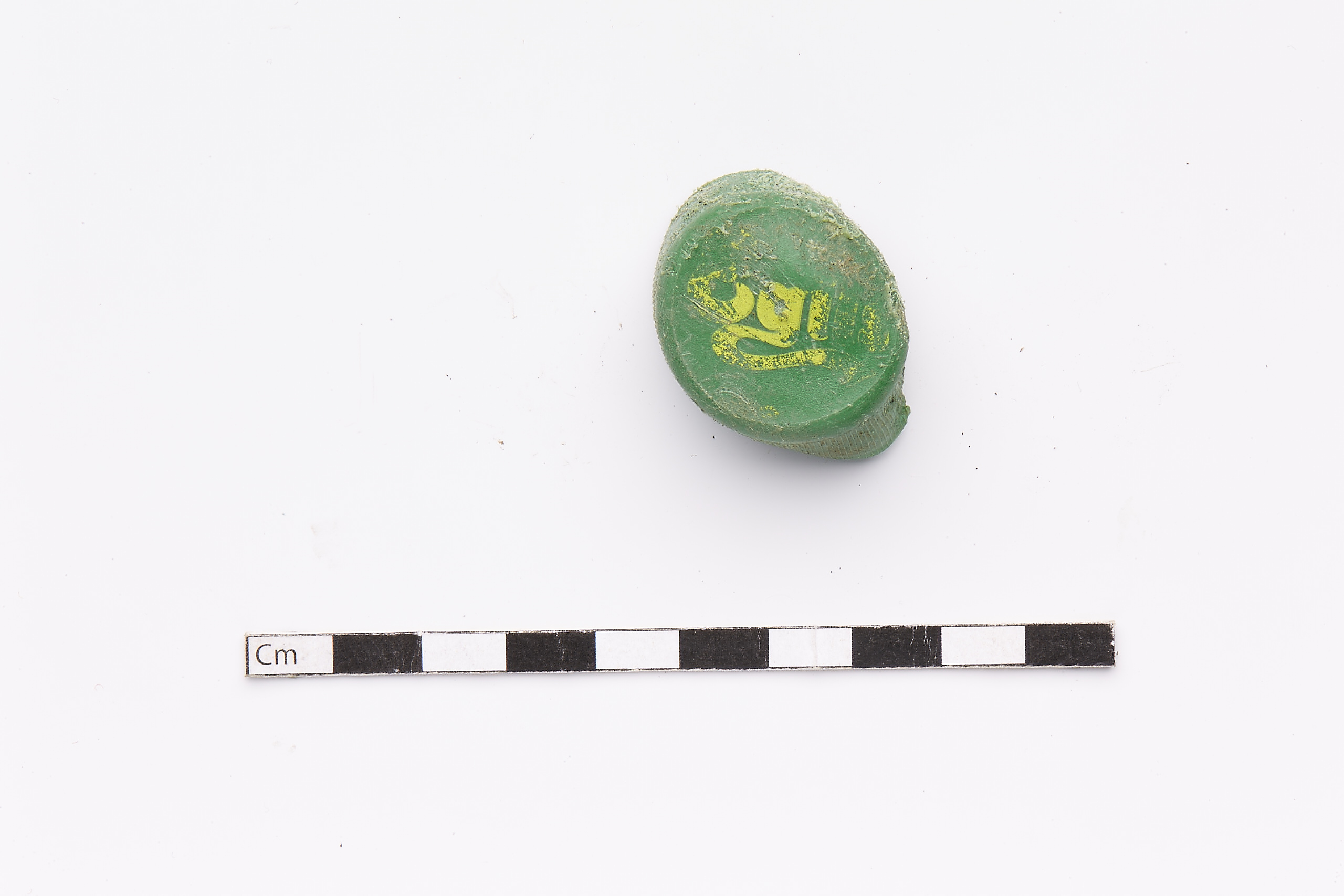
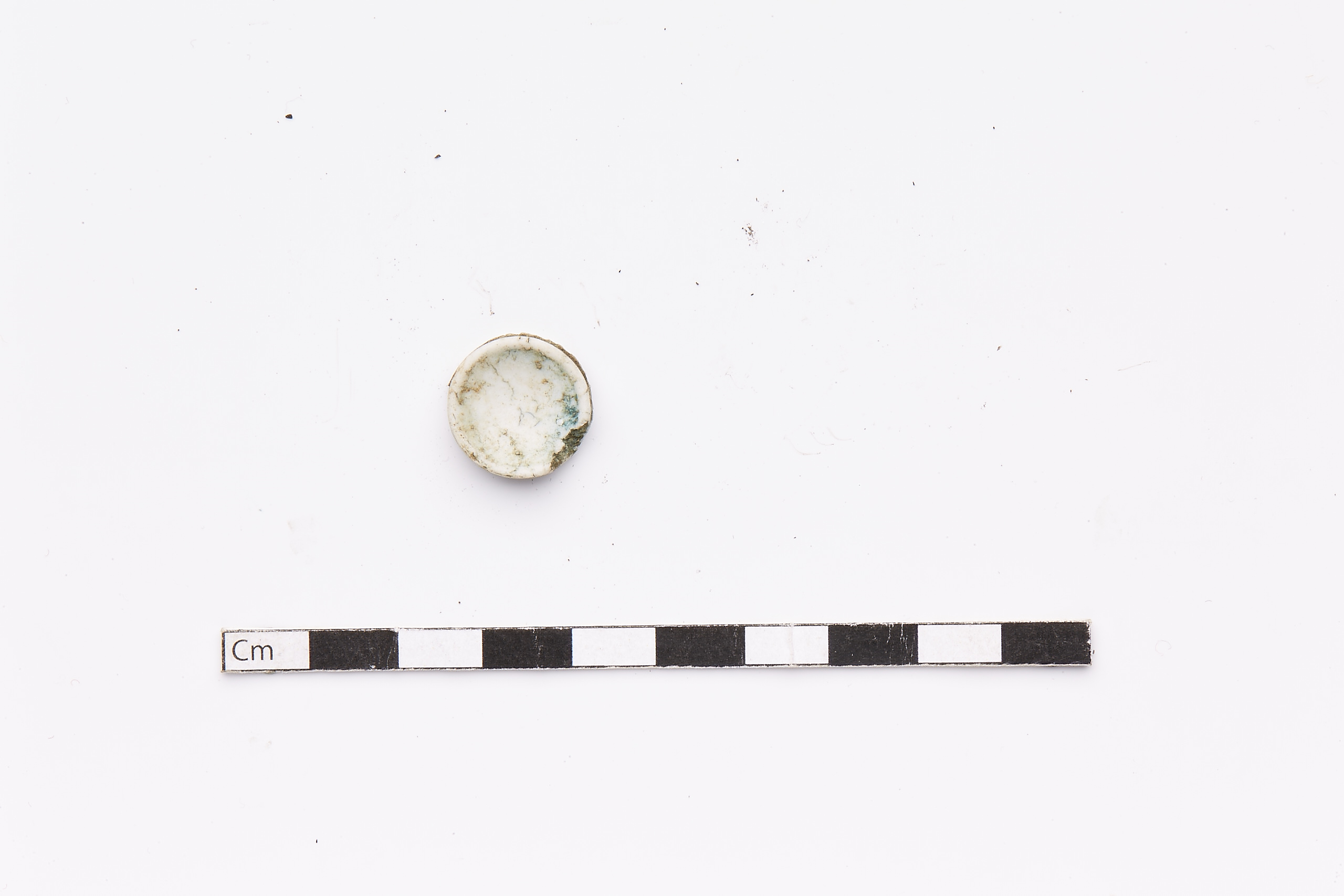
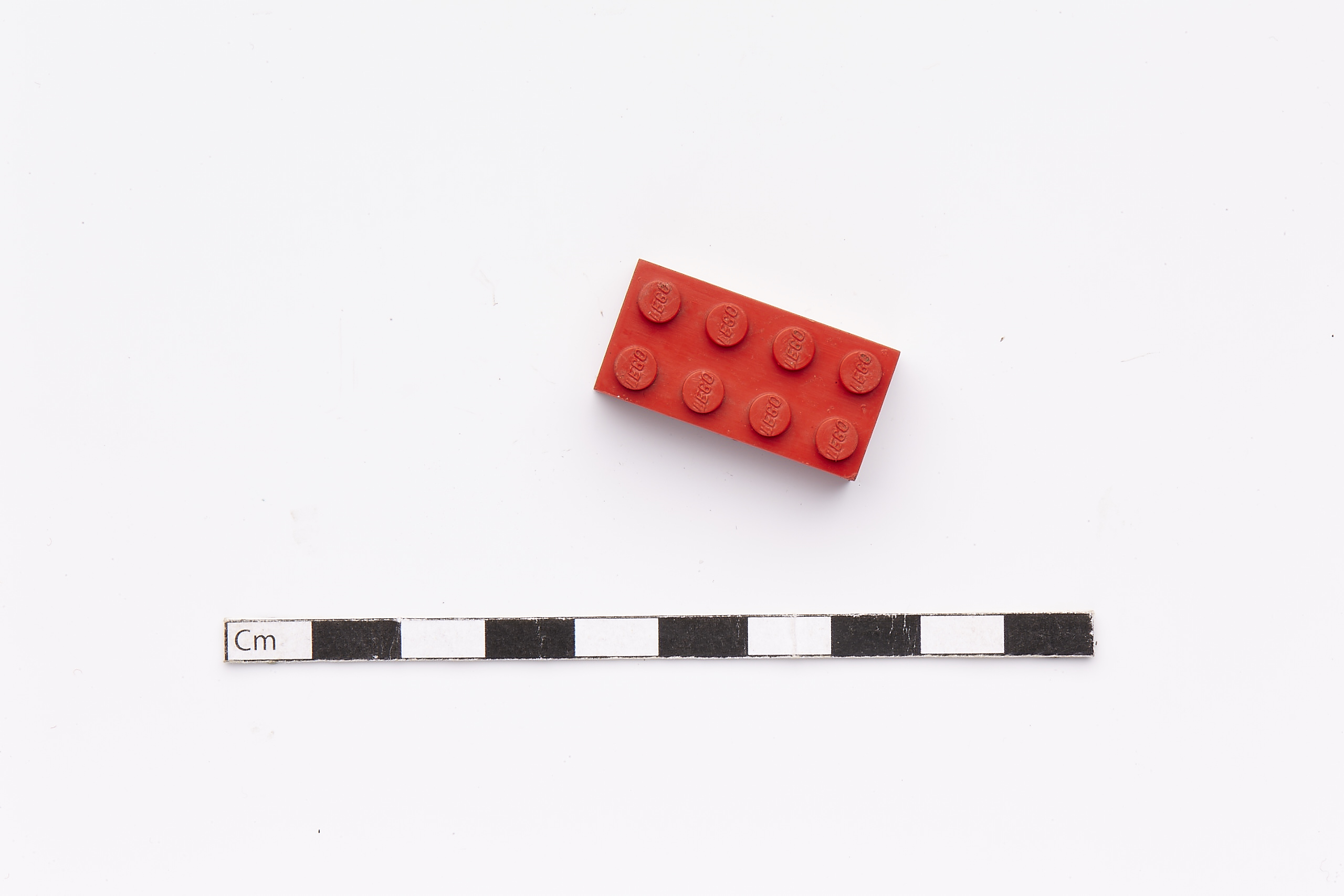
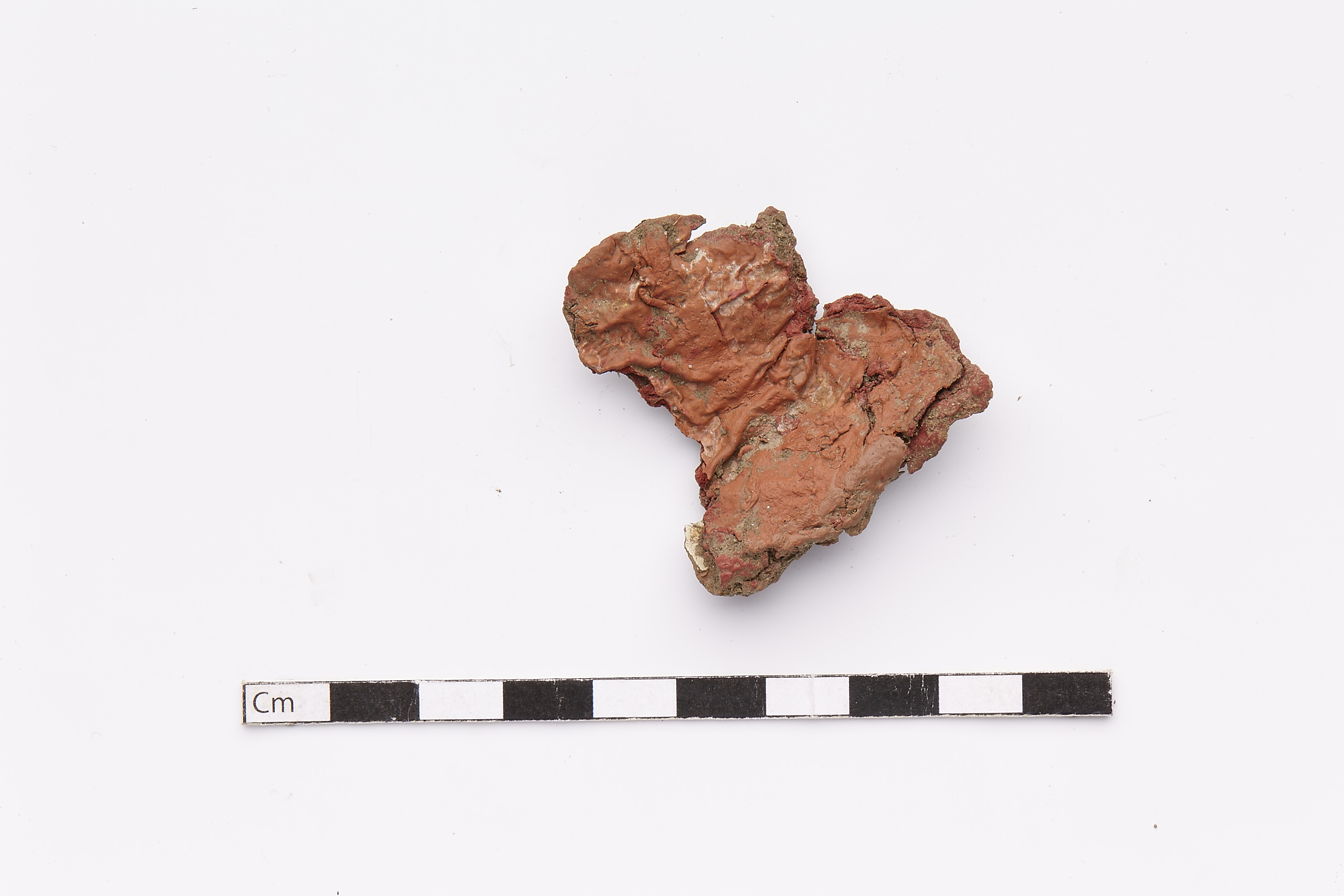

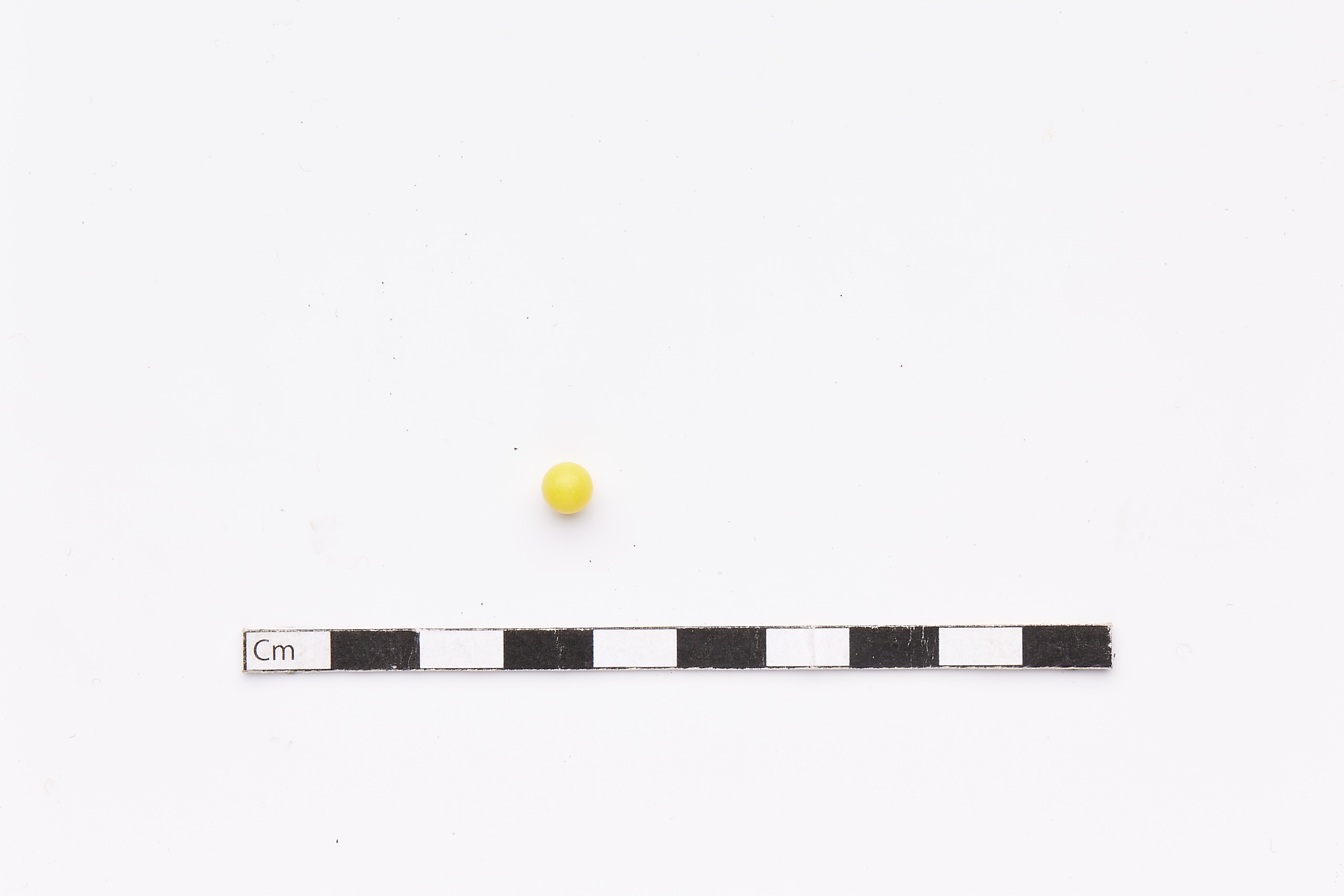
Now Remains
2014 -
In the summer of 2014, Þorgerður assisted the Archeological Institution of Iceland, during several excavation projects and registration in Mývatnssveit. A piece of red plastic, found in the topsoil of an ash heap by Helluvað, was of interest to the artist and led to collaborating with the National Museum. The piece of plastic was registered and documented, and will be preserved in the National Museum when the Helluvað-study is completed.
According to one of the basic principles of archeology, an object cannot be considered an artefact, unless it is at least a 100 years old. However, during an excavation, archeologists need to consider anything that is found on site. Recently it has become increasingly difficult to eliminate plastic objects found in the topsoil during excavation and to dismiss them simply as garbage, even though most of them will be discarded. The archeologist has great power as a result, with his/her decisions inevitably shaping history.
As part of her research Þorgerður collaborated with The National Museum by photographing plastic objects, and giving them a visual presence in the museum’s registry. Contemporary artefacts, which might often be considered garbage, are now accessible as a part of our archeological record.
Plastic is a purely industrial product and decomposes very slowly in nature, and its particles are spread around the world via water, living beings and other cycles. The amount of plastic in our surroundings, and the fact that it may now be considered as artifacts, fuels questions regarding collections; where they begin and end. When should we archive?


From the exhibition þá, þegar in Harbinger gallery, 2016

words by Bjarki Bragason
“This finding made it possible, three hundred years ago, to formulate a general theory of the Library and solve satisfactorily the problem which no conjecture had deciphered: the formless and chaotic nature of almost all the books. One which my father saw in a hexagon on circuit fifteen ninety-four was made up of the letters MCV, perversely repeated from the first line to the last. Another (very much consulted in this area) is a mere labyrinth of letters, but the next-to-last page says Oh time thy pyramids. This much is already known: for every sensible line of straightforward statement, there are leagues of senseless cacophonies, verbal jumbles and incoherence.”
Hi again,
These lines from the Library of Babel by Jorge Luis Borges reminded me of the single nail which was recorded found from the excavation you told me about some time ago.
Since your show, Predictions, in Oslo last year, and since you started photographing the plastic objects and fragments in the collection of the National Museum, I’ve been reminded of our conversation on the Kumlabrekka slope. The photo of turf unwrapped from the ground, carefully folded over, revealing fresh dirt, comes to mind. I remember you noting this down, what effect does it have on the place if all the pre-christian burial sites, kuml, from which the slope is named, have been excavated and emptied? What is the value of the dirt which has capsuled an object? What to do about rocks from the foundation of an ancient structure, if the site is to be built upon? Do they become rocks, in a pile of other rocks, when dumped from the back of a truck into a landfill?
You realized that it was almost impossible to include/grasp every single plastic item in the museum. As soon as you’d have placed the last photo on the shelf, new objects would have entered the collection. Plastic is everywhere, even though it has only recently become part of official registered collecting. It is estimated that there are three hundred thousand fragments of plastic per square kilometer of ocean surface, and a hundred thousand on each square kilometer of the ocean floor. These are micro debris, some with a diameter smaller than that of a human hair. We of course know of larger objects, islands, plastic in the ground and the different lengths of time it takes for them to break down. The first plastics deriving purely from industrial processes appeared in the nineteenth century. It is a new chapter in history, that changes in such a short time span will have such long running effects as is becoming apparent. We have intercepted the human- and geological timescales. Perhaps that’s the destabilizing thing, when one sees a plastic comb and coca cola bottle cap in the collection of the National Museum’s archaeological finds, rather than now-remains making your own temporality so clearly visible.
Digging through the scrap pile of time can help us understand how past societies functioned. It is also a way for us to attempt to predict the future. Historian Eric Hobsbawm said that after the industrial revolution the future had less and less to do with the past, because the speed of changes is unprecedented. Now that bottle caps and styrofoam, unearthed during excavations of pre-christian burial sites have become part of registered finds by archaeologists and catalogued by museums, the space between the past and future may have been shortened a bit. Perhaps it opens the way for the tons of dirt brought up during an excavation that unearthed the single nail, to enter the collection.
BB